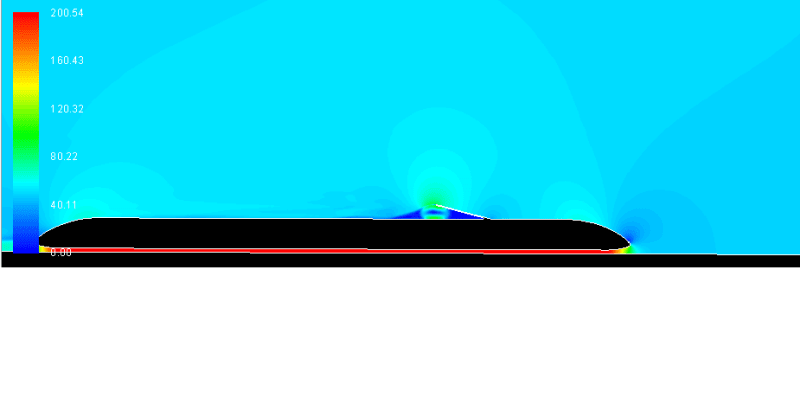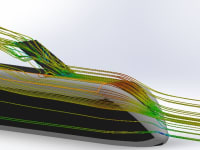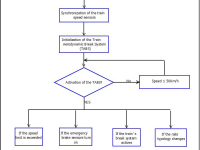In recent years, mankind has been trying to improve transportation systems, for making them more efficient and safe. In that way, one area to develop on trains is the braking system; nowadays consist of the use of disks and calipers. With the average weight and dimensions of the actual high-speed trains, the distance used to stop from cruise speed is about 4 km.
This project proposes the use of a secondary braking system allowing to decrease the distance required to stop, making possible to reduce travel time and cost, also increasing the travel security. The aerodynamic brake system it's a device previously used in the aerospace industry but without any development in train transportation. The main goal of our target industry is focused on reducing travel times by increasing speeds; that´s why this project fits perfectly in this market.
The TABS (Train Aerodynamic Brake System) uses the concept of increased air resistance and energy absorption means. The theoretical basis indicate that the aerodynamic drag force increases quadratically with speeds, so if we, in a deliberate way, increase the aerodynamic drag, the train will stop faster than a train without the TABS. Nowadays the trains has increased their top-speed, so this project has a high potential in a growing market. This is accomplished by deploying a panel on top of the train, in order to increase the aerodynamic drag coefficient XX% at any given time.
The design is focused on the primary wagon, allowing to reduce the speed from 300 Km/h to fully stop in about 1.7 Km less meaning a reduction of 45.8% required to brake also expecting a reduce time spended on braking. Companies interested in invest on this project will increase in their security systems due to a less abusive use of the main brake system and consequently reducing the wear of it, saving approximately 54.2% in the consumption of brake pads due to the less time being needed for break. By reducing the braking time, they will arrive to their destination in less time and so it will reduce the power consumption. All of this will help the environment and reduce operating costs for the company, a WIN-WIN opportunity.
An amendment to the body ceilings is recommended to insure integrity due to the air pressure generated on the panel when is raised. We suggest the use of one panel with dimensions of 7.3m x 1.5m and a maximum angle to be raised of 15°. The recommended materials for the panel is aluminum 6061 T3 for its strength-low weight ratio. To raise the panel, it’s suggested a rack and pinion system, actuated by an electrical motor connected to a epicyclic transmission to ensure a compact design. In the attached pictures you can see an approach to the control system of TABS, the 2D CFD simulation results and the final CAD for the design.
Like this entry?
-
About the Entrant
- Name:Alejandro Acevedo
- Type of entry:teamTeam members:Alejandro Acevedo
Yeisy Blanco
Miguel Angel Roberto
Juan Toledo - Software used for this entry:Solidworks and Ansys
- Patent status:none








